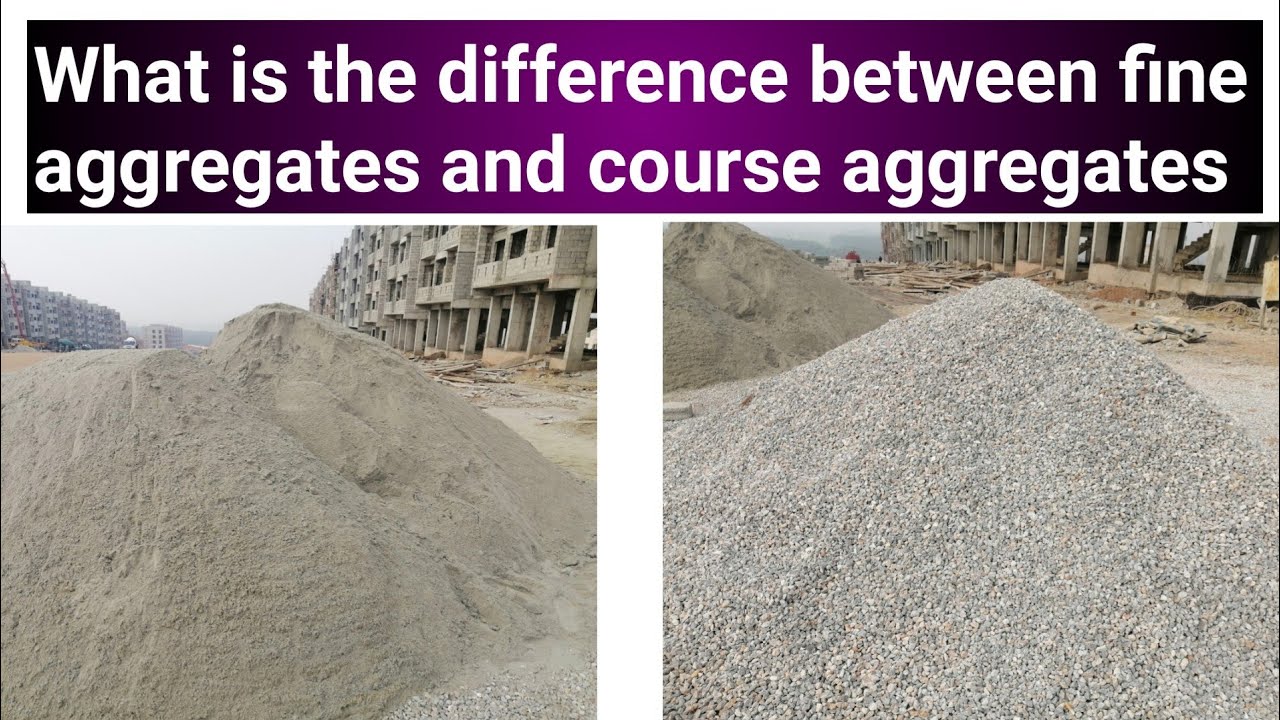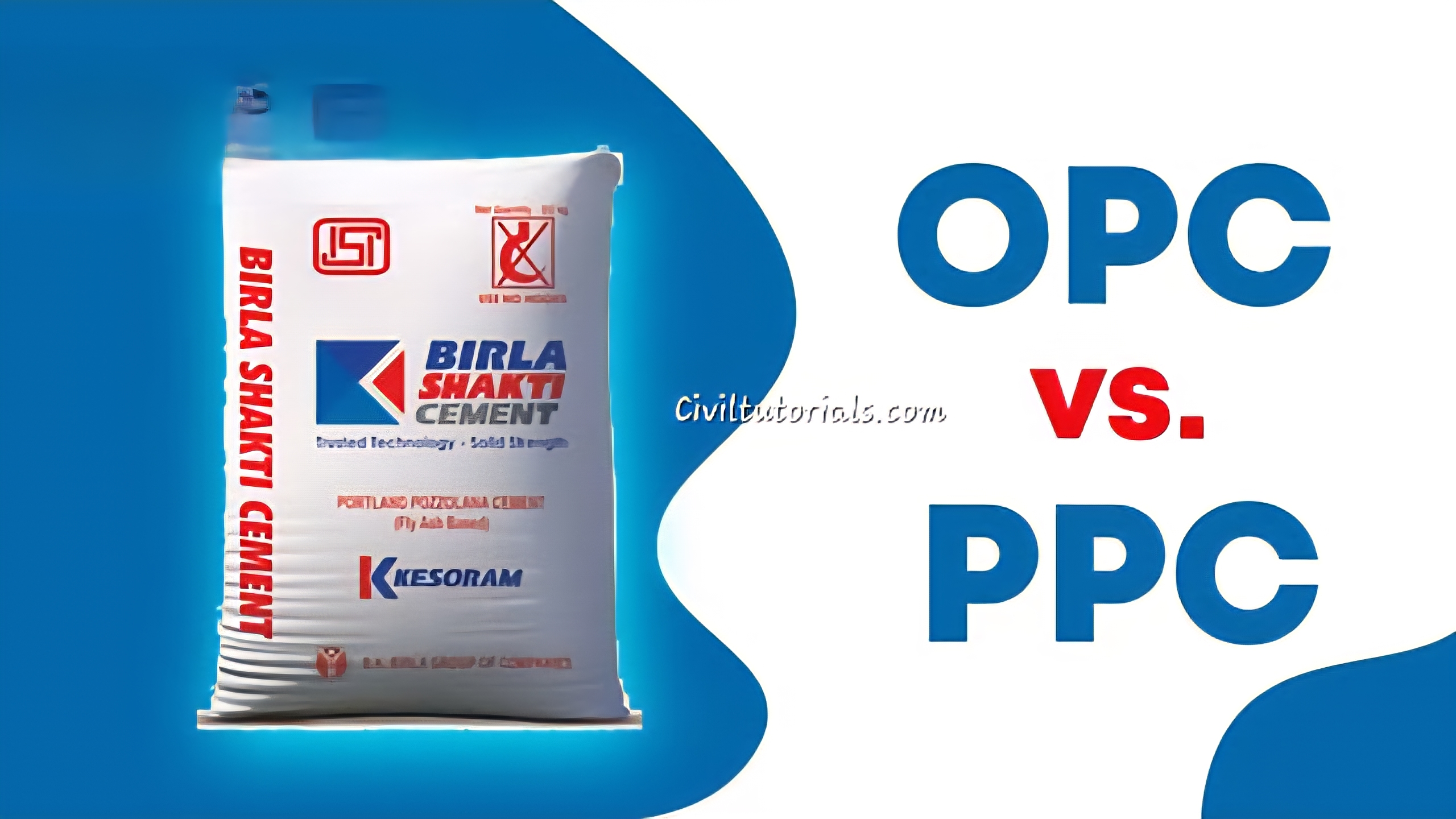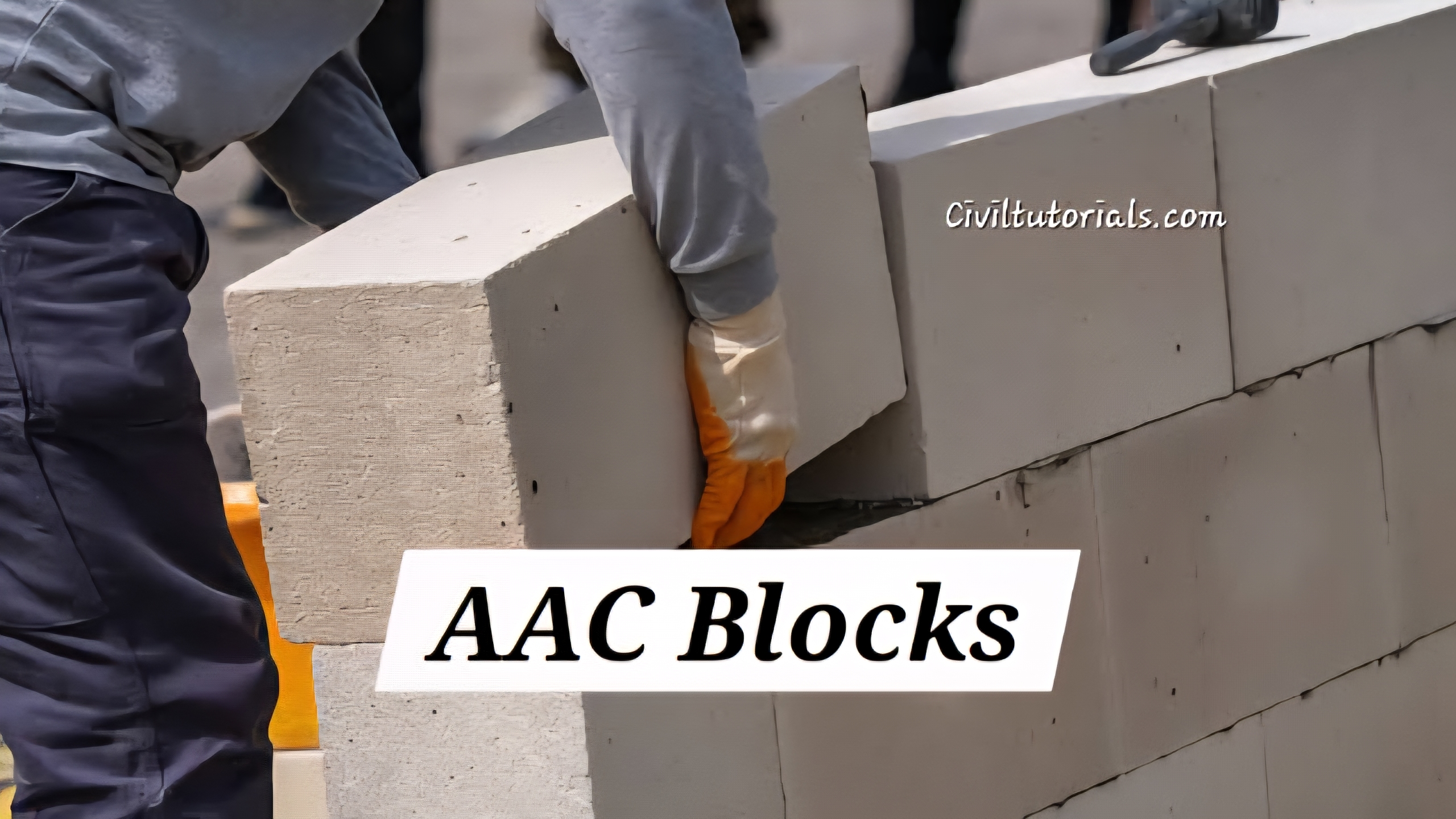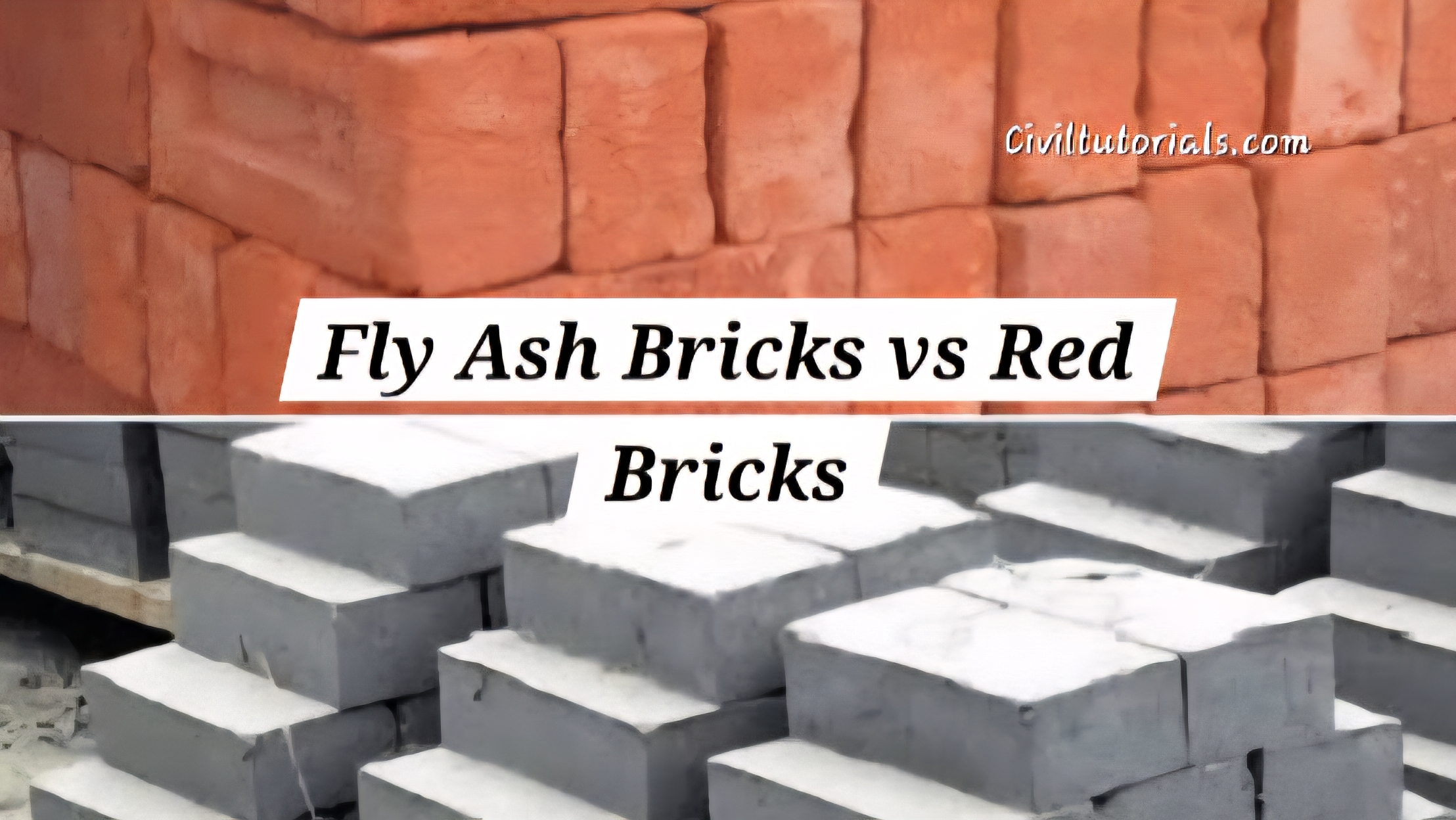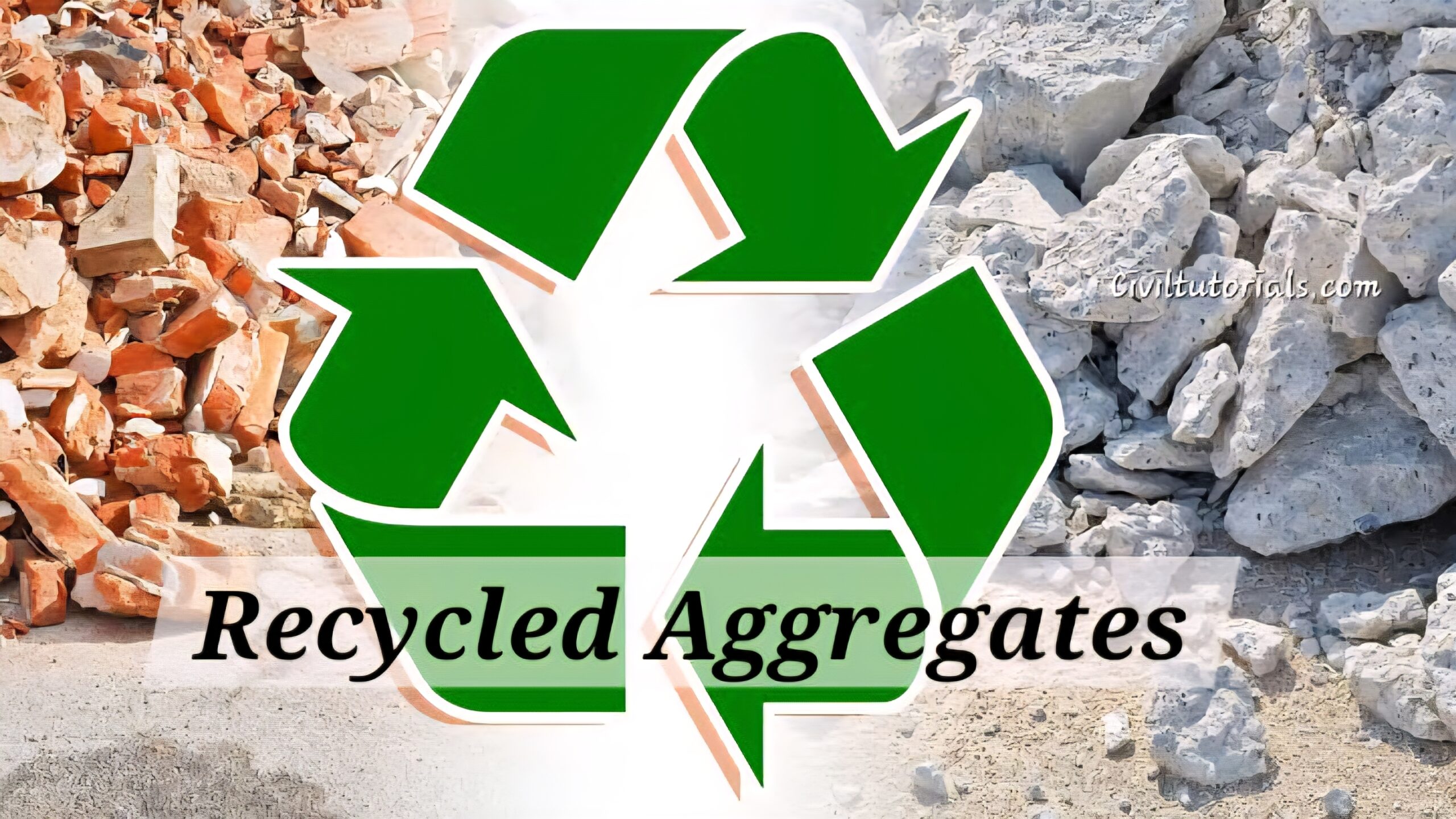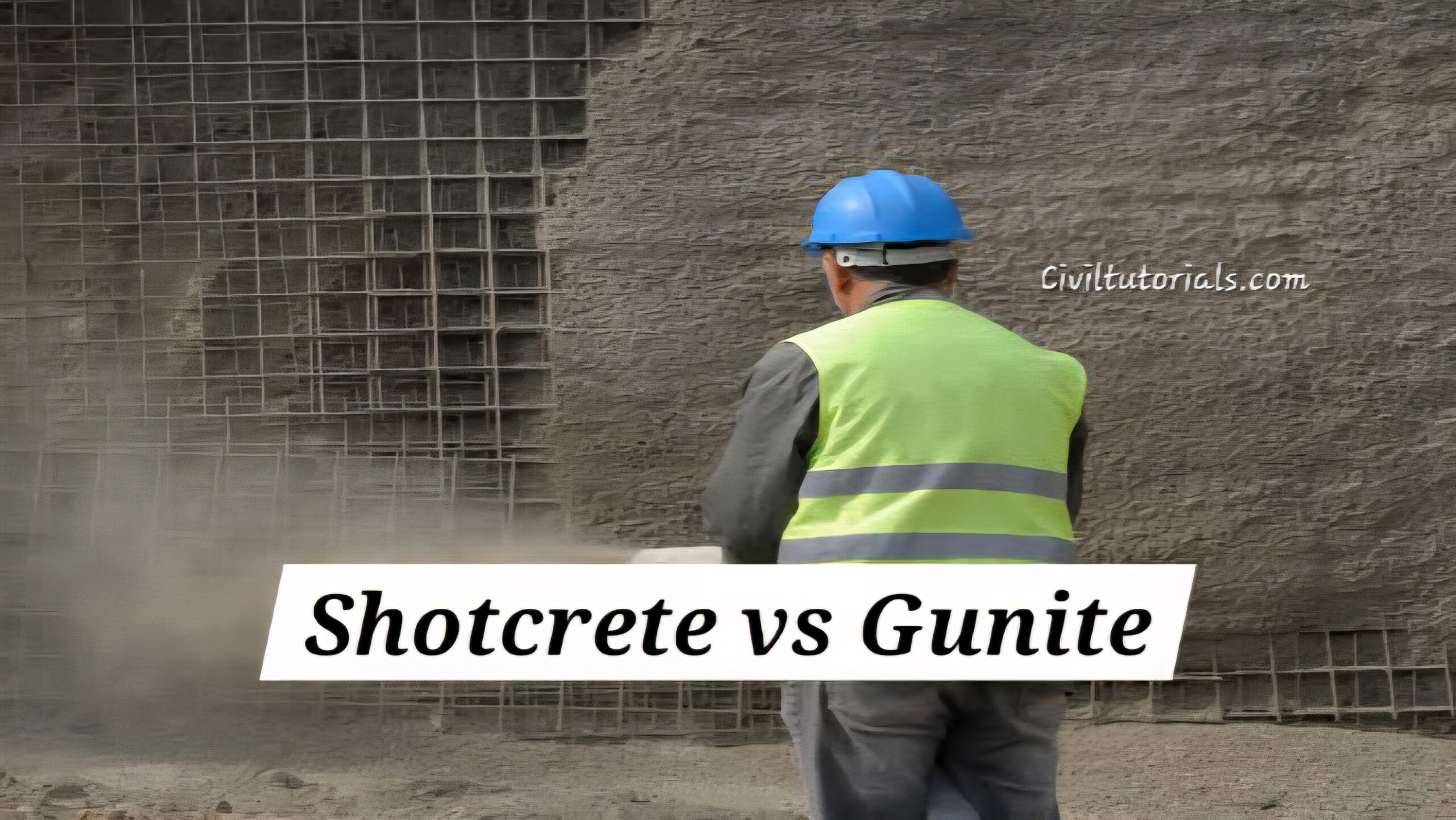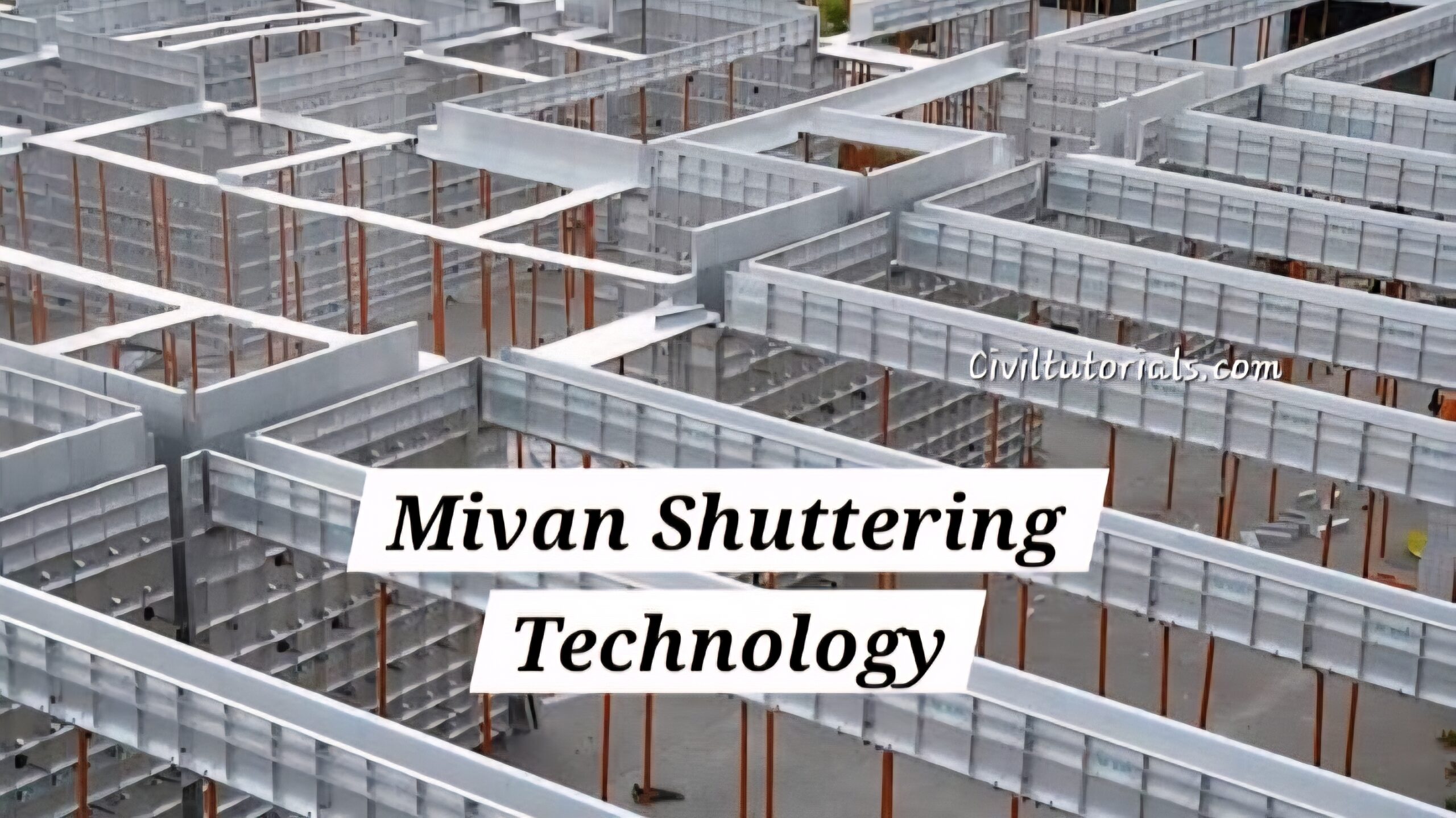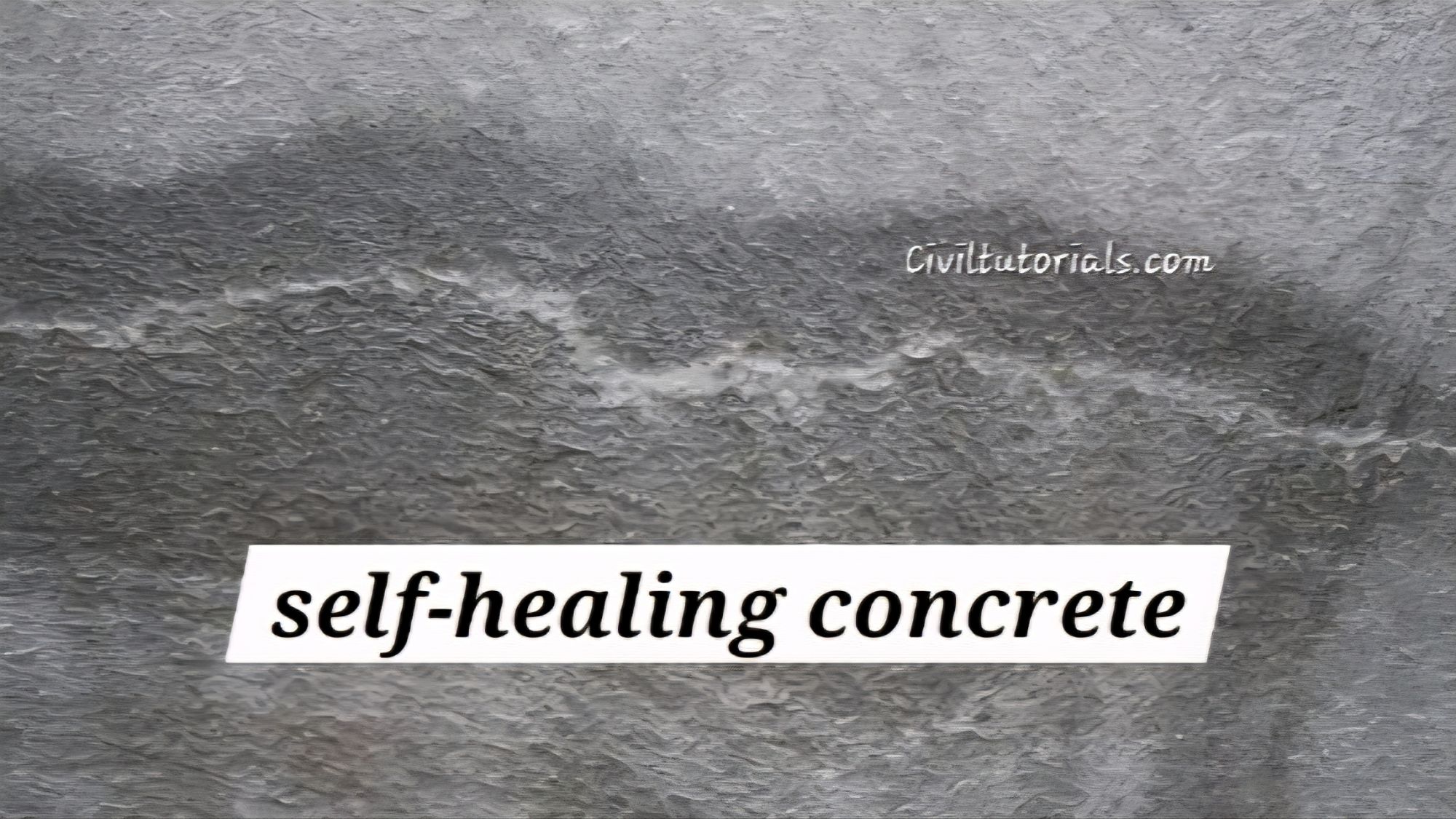Even though fly ash bricks are more economical and environmentally friendly than traditional clay bricks, they do have some significant drawbacks. These include reduced compressive strength when compared to traditional clay bricks, increased brittleness, variability in quality, higher moisture absorption rates that could cause durability issues, environmental concerns about contaminants leaching, setup and availability costs, and potential aesthetic drawbacks. It is important to be aware of these limitations when determining whether fly-ash bricks are appropriate for construction projects.
Lower Compressive Strength
One significant drawback of fly ash bricks over traditional clay bricks is their lower compressive strength, which means that they might not be as strong enough to withstand large loads or structural stresses as clay bricks are.
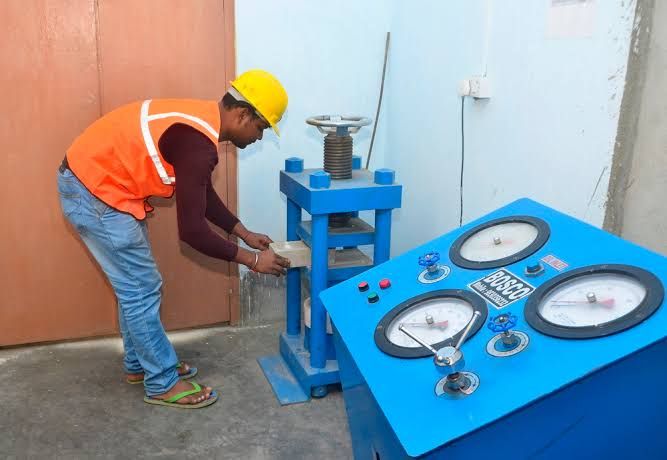
Because of this, fly ash bricks might not be appropriate for certain load-bearing applications or construction projects where high compressive strength is needed. When selecting construction materials and designing structures, builders and engineers should carefully consider this factor to make sure they meet safety and performance standards.
Fly Ash Bricks Brittleness
Brittleness in fly ash bricks refers to their tendency to break or crack easily under certain conditions. Fly ash bricks, despite their numerous advantages, can exhibit brittleness due to factors such as the composition of fly ash used in their production, the manufacturing process, and the curing conditions.
Brittleness can be problematic in construction applications where durability and resilience are essential. Factors that contribute to brittleness in fly ash bricks include:
- Material Composition: The composition of fly ash, along with other materials used in the manufacturing process, can affect the brittleness of the bricks. Variations in the composition can lead to inconsistencies in the structural integrity of the bricks.
- Curing Process: Improper curing of fly ash bricks, such as insufficient moisture content or inadequate curing time, can result in poor bonding between particles, leading to increased brittleness.
- Handling and Transportation: Rough handling during transportation or installation can cause microcracks or damage to the bricks, making them more susceptible to brittleness and failure over time.
- Environmental Conditions: Exposure to extreme temperatures, moisture, or chemical agents can accelerate the deterioration of fly ash bricks, leading to increased brittleness and reduced lifespan.
Variability in Quality
Variability in quality is a significant concern when it comes to fly ash bricks. This variability can stem from various factors, including:
- Source of Fly Ash: The quality of fly ash can vary depending on its source, as different coal combustion processes produce fly ash with different chemical compositions and properties.
- Manufacturing Process: The manufacturing process of fly ash bricks can vary from one manufacturer to another, leading to differences in the quality of the final product. Factors such as the ratio of fly ash to other ingredients, mixing techniques, and curing methods can all influence the quality of the bricks.
- Quality Control Measures: The implementation of quality control measures during the manufacturing process can also affect the consistency of fly ash bricks. Manufacturers that have stringent quality control procedures in place are more likely to produce bricks with uniform properties and performance.
- Raw Material Composition: Apart from fly ash, other materials such as cement, sand, and aggregates are often used in the production of fly ash bricks. Variations in the composition or quality of these raw materials can contribute to variability in the final product.
- Curing Conditions: The curing process plays a crucial role in the strength and durability of fly ash bricks. Variations in curing conditions, such as temperature, humidity, and duration, can impact the quality of the bricks and lead to inconsistencies in performance.
- Testing and Certification: The absence of standardized testing and certification processes for fly ash bricks can also contribute to variability in quality. Without proper testing and certification, it can be challenging for consumers to assess the quality and reliability of the bricks.
Moisture Absorption
Moisture absorption in fly ash bricks refers to the ability of these bricks to absorb and retain moisture from their surroundings. Fly ash bricks typically have higher porosity compared to traditional clay bricks, which makes them more prone to absorbing moisture. This higher porosity can result from the presence of voids or pores within the brick structure.
When fly ash bricks absorb moisture, it can lead to several potential issues:
- Reduced Strength: Moisture absorbed by fly ash bricks can weaken their structural integrity over time, particularly if the bricks are exposed to repeated cycles of wetting and drying. This can result in a decrease in compressive strength, making the bricks more susceptible to damage or failure.
- Cracking and Spalling: Excessive moisture absorption can cause fly ash bricks to swell or expand, leading to cracking or spalling of the brick surface. This can compromise the appearance and durability of the bricks and may necessitate repairs or replacement.
- Mold and Mildew Growth: Moisture-laden fly ash bricks provide an ideal environment for the growth of mold, mildew, and other microorganisms. This not only affects the aesthetic appeal of the bricks but also poses potential health risks to occupants of buildings constructed with these bricks.
- Efflorescence: Moisture absorbed by fly ash bricks can dissolve soluble salts present within the bricks. When the moisture evaporates from the brick surface, these salts may be deposited as white crystalline deposits, known as efflorescence, which can detract from the appearance of the bricks.
Environmental Concerns
Environmental concerns related to fly ash bricks include:
- Potential Heavy Metal Leaching: Fly ash, a byproduct of coal combustion, may contain trace amounts of heavy metals such as arsenic, lead, and mercury. If not properly managed during production or disposal, there is a risk of these metals leaching into the surrounding environment, contaminating soil, water, and air.
- Air Pollution During Production: The manufacturing process of fly ash bricks involves mixing fly ash with other materials and then curing them using heat. This process can release pollutants such as particulate matter, sulfur dioxide, and nitrogen oxides into the atmosphere, contributing to air pollution if not controlled through appropriate emission control measures.
- Landfilling of Fly Ash: If fly ash is not utilized in brick production or other beneficial applications, it may be disposed of in landfills. Large-scale disposal of fly ash in landfills can occupy significant land space and may pose risks of groundwater contamination and soil pollution if not properly managed.
- Energy Consumption: The production of fly ash bricks requires energy for mixing, curing, and transportation. Depending on the source of energy, this process may contribute to greenhouse gas emissions and exacerbate climate change if fossil fuels are predominantly used.
- Water Consumption: The manufacturing process of fly ash bricks typically involves the use of water for mixing and curing. High water consumption can strain local water resources, especially in regions facing water scarcity or drought conditions.
- Habitat Disruption: The extraction of raw materials for fly ash brick production, such as clay and sand, may involve habitat disruption and ecological damage, particularly if mining activities are not carried out sustainably.
Limited Availability of Fly Ash
One major drawback of fly ash bricks is their limited availability. Fly ash is a byproduct of burning coal in power plants and is the main raw material used to make fly ash bricks. Availability of fly ash can vary, especially in areas where there are not many coal-fired power plants or where there are other ash disposal options.

The restricted availability of fly ash bricks can present difficulties for manufacturers and construction projects that depend on them. These difficulties could result in supply fluctuations, higher transportation costs from far-off sources, or even shortages that cause delays in construction. Furthermore, certain regions or countries may find it challenging to fully adopt fly ash brick technology as a sustainable building material.
Improving fly ash collection and utilization procedures in power plants and looking into other sources of additional materials for brick production are necessary to address the problem of limited fly ash availability. Future research into new technologies or processes that lessen reliance on fly ash while preserving the advantages of fly ash bricks could also help mitigate this drawback.
Higher Transportation Costs
Due to their heavier weight than traditional clay bricks, fly ash bricks can be more expensive to transport over long distances. This extra weight can require larger vehicles or multiple trips to deliver the same quantity of bricks, which can result in higher fuel consumption and transportation fees. In addition, the bulkiness of fly ash bricks can add to the cost of transportation as it may require specialized handling and loading equipment. When all things are considered, the higher transportation costs of fly ash bricks can potentially reduce their cost-effectiveness when compared to other building materials.
Longer Curing Time
One of the disadvantages of fly ash bricks is their longer curing time compared to traditional clay bricks. Curing is the process of allowing the bricks to dry and gain strength after they have been manufactured.
Fly ash bricks typically require a longer curing period due to their composition and porosity. Since fly ash bricks may have a higher porosity than clay bricks, they absorb more moisture during the manufacturing process. This excess moisture needs to be released slowly to ensure proper strength and durability.
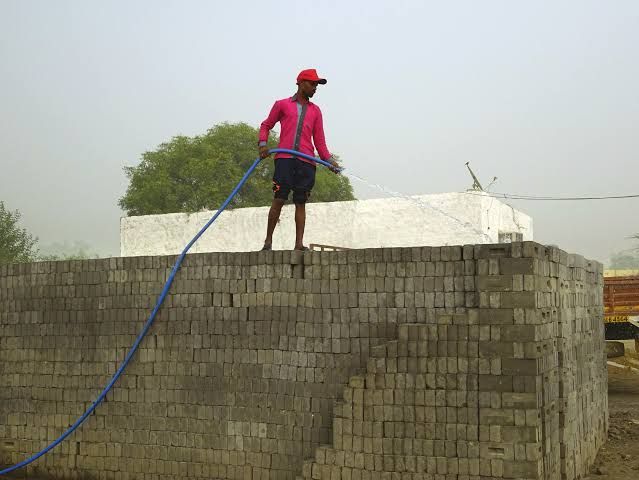
The longer curing time can delay construction projects, impacting timelines and potentially increasing costs. It requires careful planning and scheduling to account for the extended curing period of fly ash bricks, especially in time-sensitive projects.
However, despite this drawback, proper curing is essential for ensuring the desired strength and performance of fly ash bricks in construction applications. It’s crucial to follow manufacturer recommendations and best practices for curing to achieve optimal results and mitigate the effects of the longer curing time.
Fly Ash Bricks Aesthetic Considerations
Aesthetic considerations in fly ash bricks refer to how they are perceived visually and their impact on the overall appearance of a structure or project. Here are some points to consider:
- Texture: Fly ash bricks often have a rougher texture compared to traditional clay bricks, which can affect the visual appeal of the finished surface.
- Color Variations: The color of fly ash bricks can vary depending on factors such as the source of fly ash and the manufacturing process. This variability may result in inconsistent coloration across the brickwork, which can impact the aesthetic uniformity of the structure.
- Appearance of Surface: The surface of fly ash bricks may exhibit irregularities or blemishes due to the manufacturing process or the presence of impurities in the fly ash. These imperfections can detract from the overall visual appeal of the bricks.
- Compatibility with Design Styles: Depending on the architectural style or design concept of a project, the appearance of fly ash bricks may or may not align with the desired aesthetic. Some design styles may favor the industrial or modern look of fly ash bricks, while others may prefer the more traditional appearance of clay bricks.
- Finishing Options: While fly ash bricks can be left exposed for a rustic or industrial aesthetic, they can also be plastered or rendered to achieve a smoother finish. However, the choice of finishing may impact the overall aesthetic effect and should be considered during the design phase.
- Long-Term Appearance: Over time, factors such as weathering and exposure to environmental elements can affect the appearance of fly ash bricks. This should be taken into account when assessing their suitability for long-term aesthetic considerations.
- Blend with Surroundings: The visual integration of fly ash bricks with the surrounding environment, neighboring structures, and landscape features should be considered to ensure harmony and coherence in the overall aesthetic composition.
- Perception of Sustainability: For some projects, the use of fly ash bricks may be perceived as environmentally friendly and contribute positively to the overall aesthetic by aligning with sustainability goals and values.
Fly Ash Bricks Regulatory Compliance
Construction projects may become more complicated and expensive as a result of adhering to norms and laws pertaining to the usage of fly ash bricks, such as building codes and environmental restrictions.
Making educated choices on the application of fly ash bricks in building projects requires an understanding of these drawbacks.

